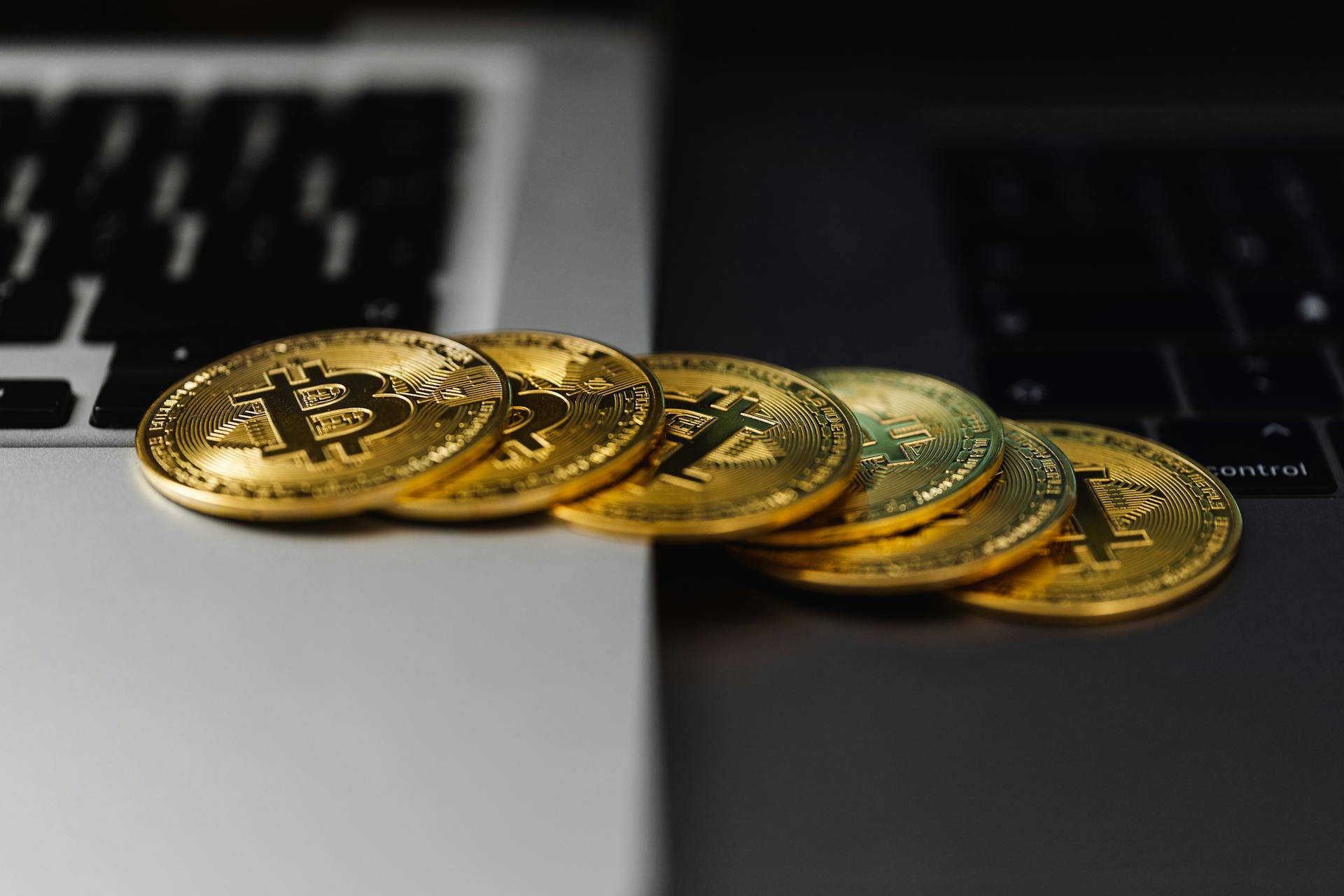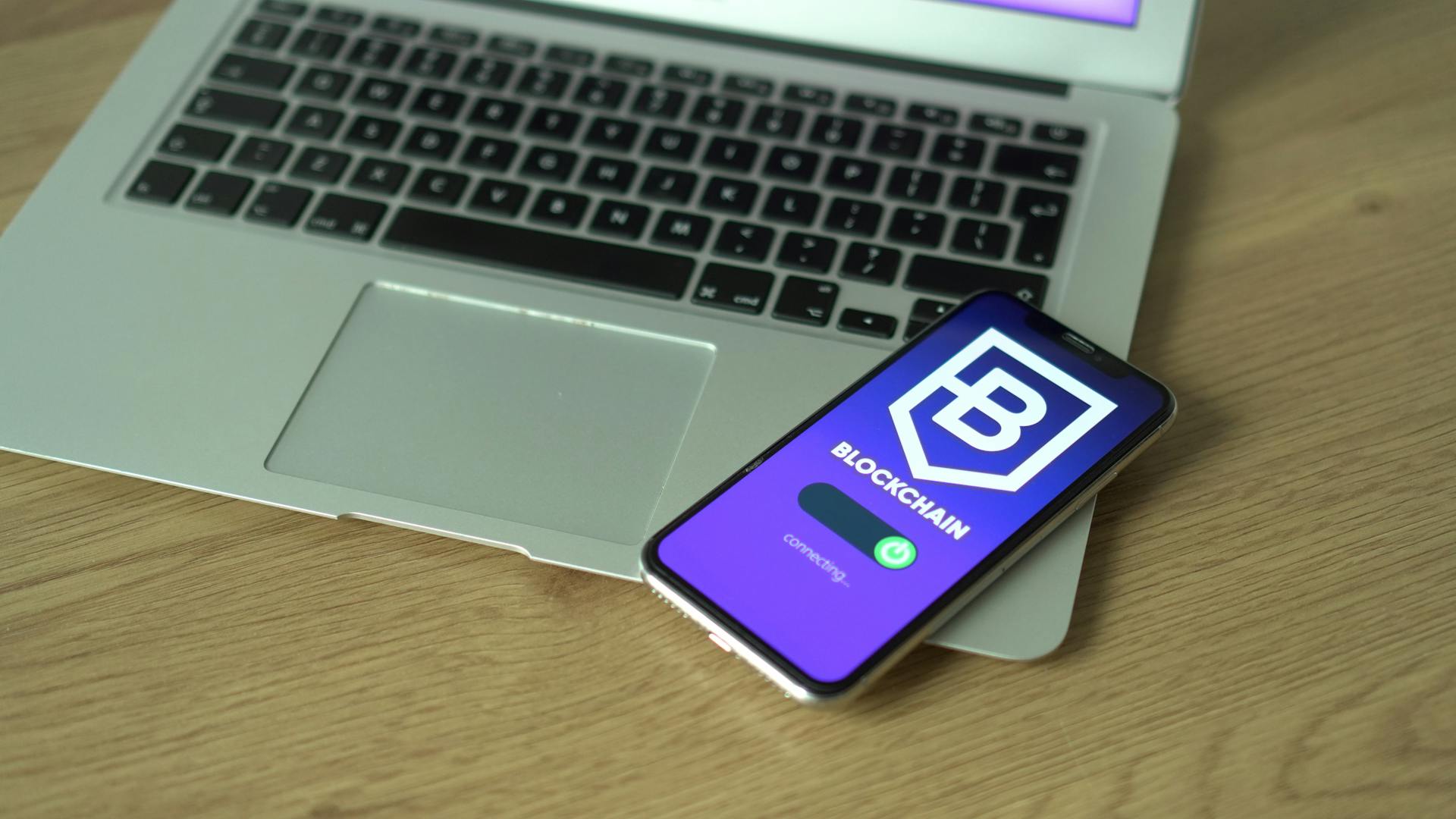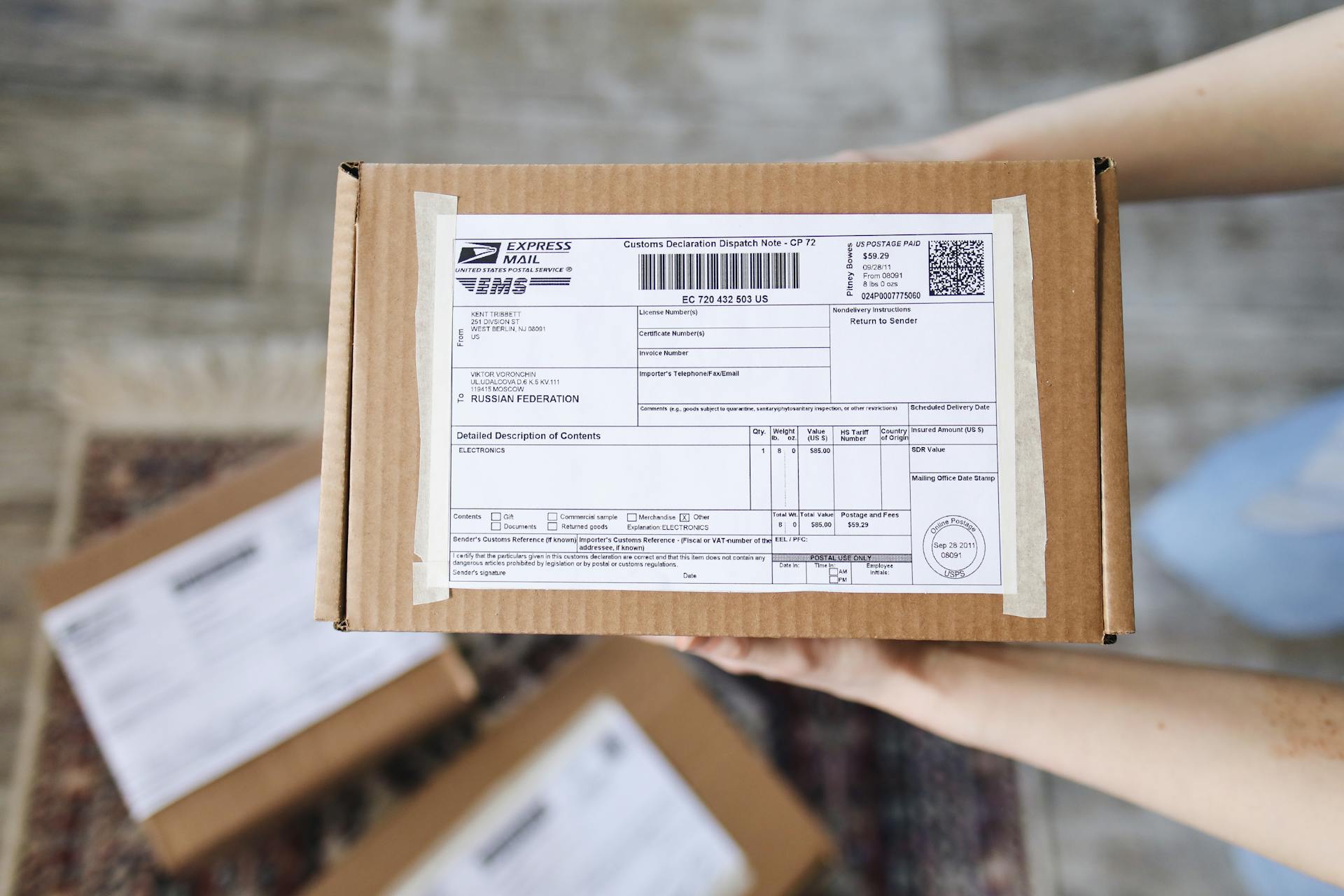
Getting a Bitcoin address is the first step to understanding the basics of Bitcoin. You can obtain a Bitcoin address through a Bitcoin wallet, which can be a software program, a physical device, or a service that allows you to store, send, and receive Bitcoins.
To create a Bitcoin address, you need a Bitcoin wallet, which can be downloaded from the internet or obtained from a reputable provider. A Bitcoin wallet can be a desktop, mobile, or web-based application.
A Bitcoin address is a unique string of letters and numbers that allows you to receive Bitcoins. It's similar to a bank account number, but instead of routing money between banks, it routes Bitcoins between wallets.
Bitcoin addresses are case-sensitive and can contain up to 34 alphanumeric characters.
Getting Started
To get started, you'll need to set up a crypto wallet. First, consider the type of wallet that's right for you, thinking about security requirements, purchasing preference, and intended use.
You'll need to choose a wallet, which is the first step in the process. There are many different types to choose from, so take your time and select the one that best fits your needs.
Next, download and install the wallet on your device. This will give you access to the wallet's features and functionality.
Creating a strong password is crucial for securing your wallet. Make sure it's a password you'll remember, but also one that's difficult for others to guess.
Now that you've set up your wallet, you'll need a Bitcoin blockchain address to deposit Bitcoin or other crypto assets.
Using Bitcoin
You can use a Bitcoin address similarly to a bank account number. Share it to receive payments and request others' addresses to send them payments.
Test out small transactions to ensure you've got the address right, as sending money to the wrong address will likely result in lost funds.
A bitcoin receiving address is similar to your personal bank account number on which you receive your bitcoin. Copy and paste it, do not write or type it.
You can find your bitcoin receiving address in your wallet, usually under the 'Receive' button. Old receiving addresses will always stay valid and linked to your wallet.
Sending bitcoin is easy: click on 'Send' in your wallet, enter the receiving address you've copied, fill in how much you'd like to send, and confirm.
Be wary of $address poisoning scams, where an attacker creates a fake address that looks similar to the legitimate address of the intended recipient. This can result in stolen funds.
Recommended read: Is Trust Wallet Easy to Use to Send Crypto
Understanding Bitcoin
A Bitcoin wallet address is a randomly generated string of characters used to receive transactions in a blockchain wallet. It's a hashed version of the public key, which is used to send transactions to the wallet.
The wallet owner can generate an address at any time, and it's completely safe to share this address with friends or family, as your funds cannot be stolen by using your address alone. Your private key is also needed to access the account, so it's crucial never to share that.
Each Bitcoin address is unique, and it can be used to track your balance and transactions through a Bitcoin block explorer.
What Is Crypto?
To understand Bitcoin, you need to know what a crypto wallet is. A crypto wallet is a physical device or software program that connects with the blockchain.
These wallets contain cryptographic keys that act as unique addresses for the user, similar to signatures on checks. Users need them each time a transaction is made.
Crypto wallets are essential for protecting funds from cyber hacks at exchanges, and most Bitcoin holders prefer to store their assets in them.
A crypto wallet doesn't actually store your crypto funds, but rather enables you to interact with your funds on the blockchain.
Your wallet's primary function is safeguarding your private keys, which are crucial for securing your assets.
Every crypto wallet includes a unique public identifier called a wallet address, a string of text used to send or receive funds on the blockchain.
You'd provide your wallet address when someone wants to send you crypto, and anyone receiving crypto from your wallet will be able to see it came from your address.
Crypto wallet addresses can be 40 alphanumeric characters, making them cumbersome to enter manually.
The Important Bits
A crypto wallet is a piece of software or device that connects and interacts with the blockchain, containing a set of cryptographic keys that act as crypto addresses for the user.
Each crypto wallet has a unique public identifier called an address, a string of text used to send or receive funds on the blockchain, similar to how an email address functions.
A wallet address can be 40 alphanumeric characters, making it cumbersome to enter manually, so it's best to copy and paste it.
To receive Bitcoin, users select the desired cryptocurrency and the wallet hashes its public key for Bitcoin, creating a crypto wallet address that can be shared with anyone who wants to send Bitcoin.
Wallet addresses may change each time a new address is generated, depending on the crypto, but for Bitcoin, each address is unique.
It's completely safe to share your Bitcoin address with friends or family since your funds cannot be stolen by using your address alone – your private key is also needed.
A receiving address is similar to your bank account number, and each Bitcoin wallet has a unique Bitcoin receiving address that can be shared with others to let them know how to send coins to your wallet.
A new Bitcoin address is not only generated once you've created a new wallet but also after each transaction, which helps protect your privacy on the network.
For receiving and sending Bitcoin, it's best to copy and paste the receiving address to avoid making a mistake, as all cryptocurrency transactions are irreversible.
What's My Btc Balance?
So you want to know what your BTC balance is? To find out, you'll need to check your wallet. A crypto wallet is like a digital bank account that allows users to manage their Bitcoin.
Your BTC balance is not stored in the wallet, but rather on the blockchain, a digital ledger that records all balances and transactions. The blockchain is like a big book that keeps track of who has what.
You can find your balance by checking your wallet, which serves as an intermediary between you and your cryptocurrency holdings.
You might like: How Do I Find My Bitcoin Address
Taproot
Taproot is a significant upgrade to the Bitcoin network that was implemented in 2021. It introduced a new address format called Taproot addresses or Bech32m.
Taproot addresses start with the prefix 'bc1p' and are advanced and case-sensitive, offering improved efficiency and flexibility in transaction space.
These addresses are a result of the Pay-to-Taproot (P2TR) upgrade, which optimized transaction space.
Taproot addresses are a key feature of the Bitcoin network, providing a more efficient and flexible way to conduct transactions.
Creating a Bitcoin Address
To create a Bitcoin address, you need to create a Bitcoin wallet. You can set up a new Bitcoin wallet using Xverse, a non-custodial wallet that doesn't ask for personal information. Simply open your Xverse wallet and follow the prompts to create a new wallet.
A Bitcoin address is a long sequence of 25-34 alphanumeric characters starting with 1 or 3, like 1FGciu45rtjqwPlvxB7dnKrSMfeUczrTy5. This address can be shared with others to let them know how to send coins to your wallet.
To obtain a Bitcoin address, you need to create a Bitcoin wallet, and the wallet will automatically generate a new address for you. You can find your wallet address by selecting the "Addresses" option in your wallet, or by going to Crypto addresses in your account. Multiple addresses can be created to separate transactions or for different purposes.
Here are the different types of Bitcoin wallet addresses:
Get a Blockchain
Getting a blockchain address is a straightforward process, and it happens automatically when you set up a crypto wallet. The wallet generates a new address for you.
The Bitcoin address is a long sequence of 25-34 alphanumeric characters. It starts with either 1 or 3.
Your wallet will display this unique address, which you can use to receive Bitcoins.
Create a New
To create a new Bitcoin address, you need to set up a Bitcoin wallet. This can be done using a non-custodial wallet like Xverse, which won't ask for personal information to create an account.
You can open your Xverse wallet to get the 'Create new wallet' prompt. Set up your wallet by backing it up and choosing a strong password.
Creating a new Bitcoin address is an automatic process that happens once you complete your wallet setup. The Xverse wallet will generate a new address, which you can view by clicking on 'Receive' on the home screen.
Each wallet automatically generates a new Bitcoin address. If you've just created a new wallet, then you have a unique Bitcoin address right away.
A new Bitcoin address is not only generated once you've created a new wallet, but after each transaction as well. This helps protect your privacy on the network.
Here are the four most common types of Bitcoin wallet addresses:
Each type of address format corresponds to a different payment method and appears different from one another in length and prefixes.
Tips and Information
Test out small transactions to ensure you've got the address right, as sending crypto to the wrong address can result in lost funds.
Sending money to a fake address created by an attacker can be a common scam, known as $address poisoning.
Be wary of addresses that look similar to the legitimate address of the intended recipient, as this is often a tactic used by attackers to steal funds.
Sending a smaller test payment before transferring large amounts of money is a smart idea to avoid losing your funds.
You might like: How to Make Money with Crypto Mining
Finding and Managing
Finding and managing your Bitcoin address is easier than you think. Most wallet providers, like BitPay Wallet, make it simple to find and share your address.
To find your wallet address in the BitPay Wallet app, tap your wallet from the "My Crypto" section and select a key under the "My Wallets" section.
You can then select the “Receive” button to reveal your wallet address, which you can copy/paste or display as a QR code for easier sharing.
BitPay Wallets change your wallet address for every transaction by default, but don't worry, old addresses will still function. You can disable this feature via the “Single address” option when creating a new wallet.
Here's a quick rundown of the steps:
- Tap your wallet from the "My Crypto" section.
- Select a key under the "My Wallets" section.
- Choose the “Receive” button to find your wallet address.
Frequently Asked Questions
What is my Bitcoin address on Cash App?
To find your Bitcoin address on Cash App, navigate to the "Deposit Bitcoin" section and view your wallet address, which is a unique combination of alphanumeric characters. Your Bitcoin address will be displayed for you to use for receiving Bitcoin.
How can I copy my Bitcoin address?
To copy your Bitcoin address, simply highlight it and right-click to select 'Copy' from the drop-down menu. This will save the address to your clipboard for easy sharing or use.
Featured Images: pexels.com


